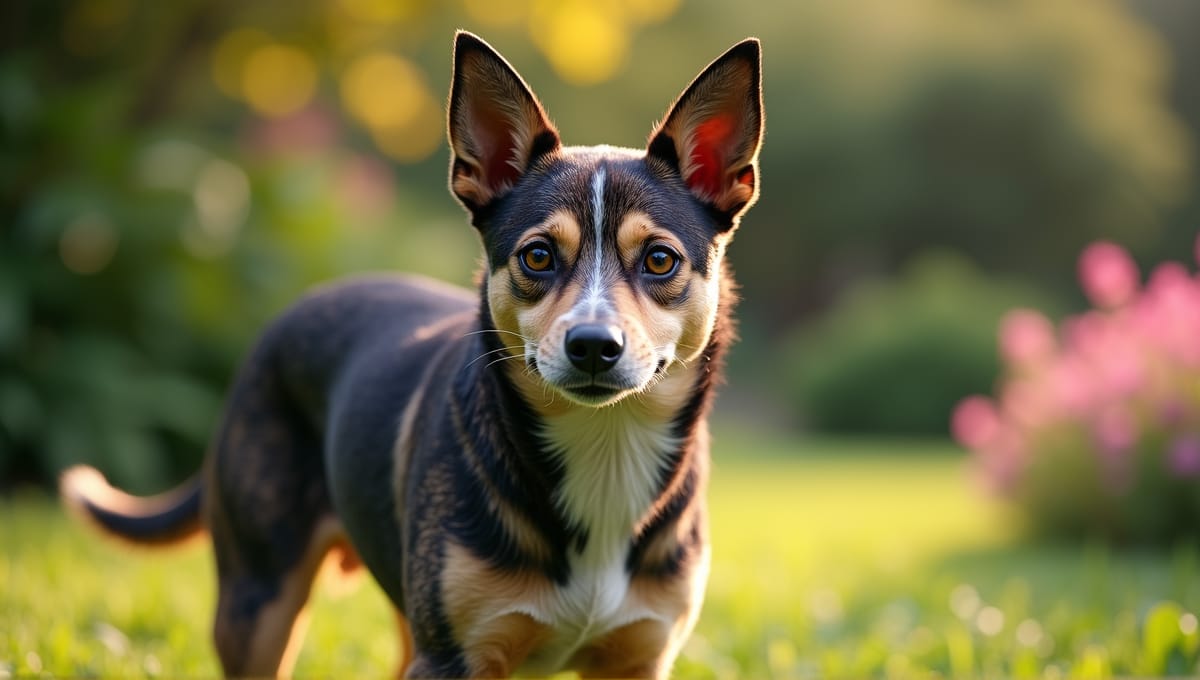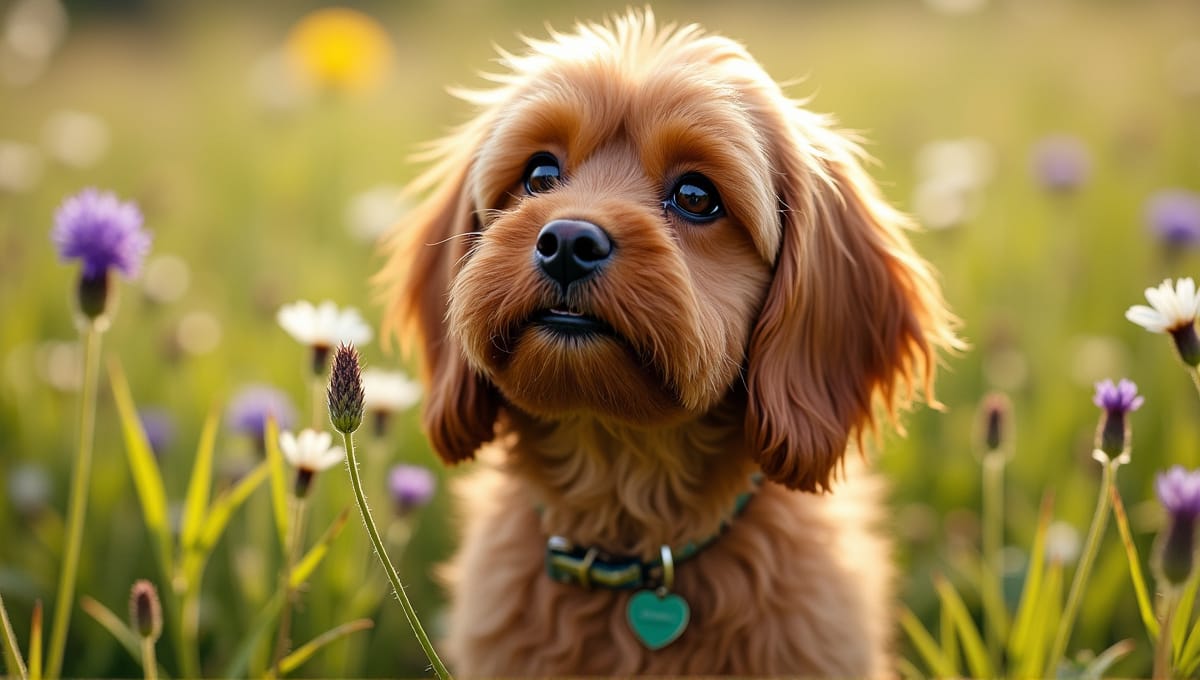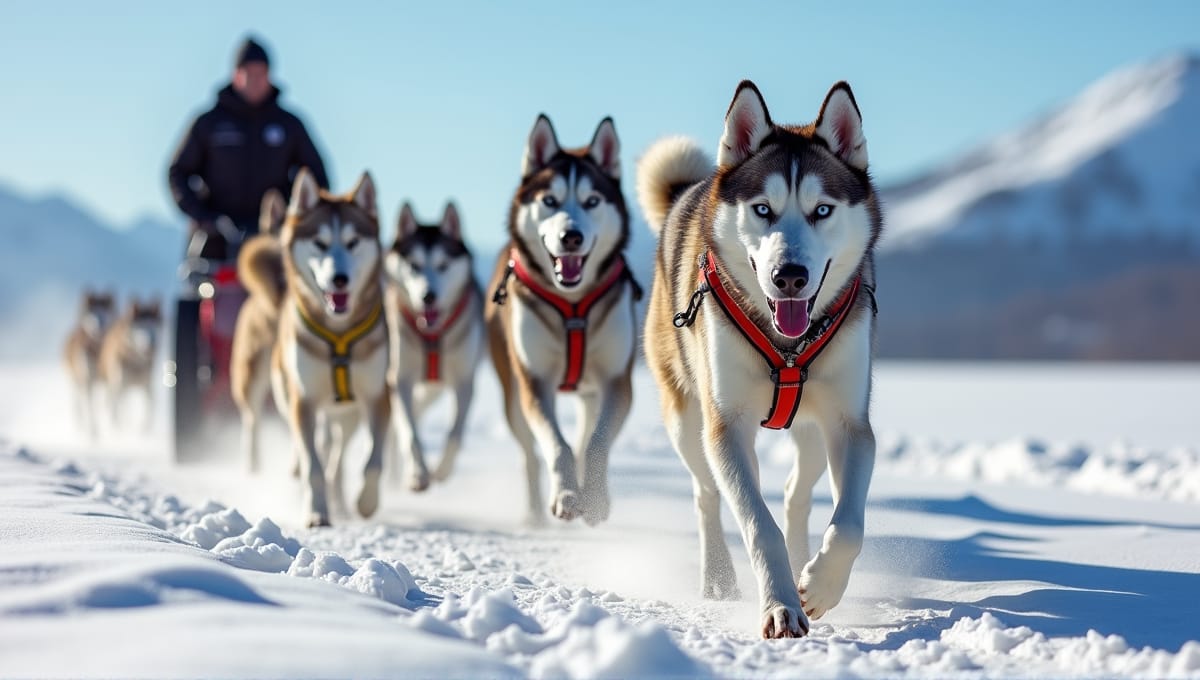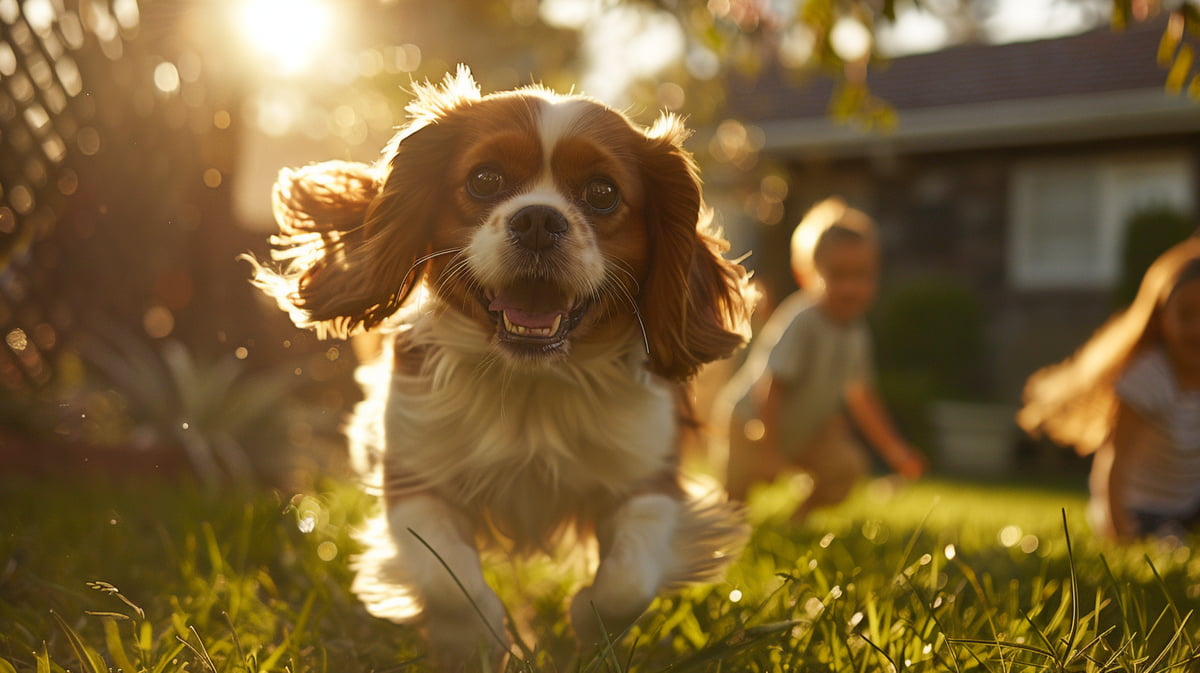Large terrier breeds are a handful both in their size and attitude. I’ve dedicated years of my life to training these feisty dogs, and I can tell you they are certainly not for the faint of heart. If you can keep up with their spunk and tenacity, however, you’re in for a real delight. So which of these sturdy sidekicks is the best fit for you?
Understanding Large Terrier Breeds
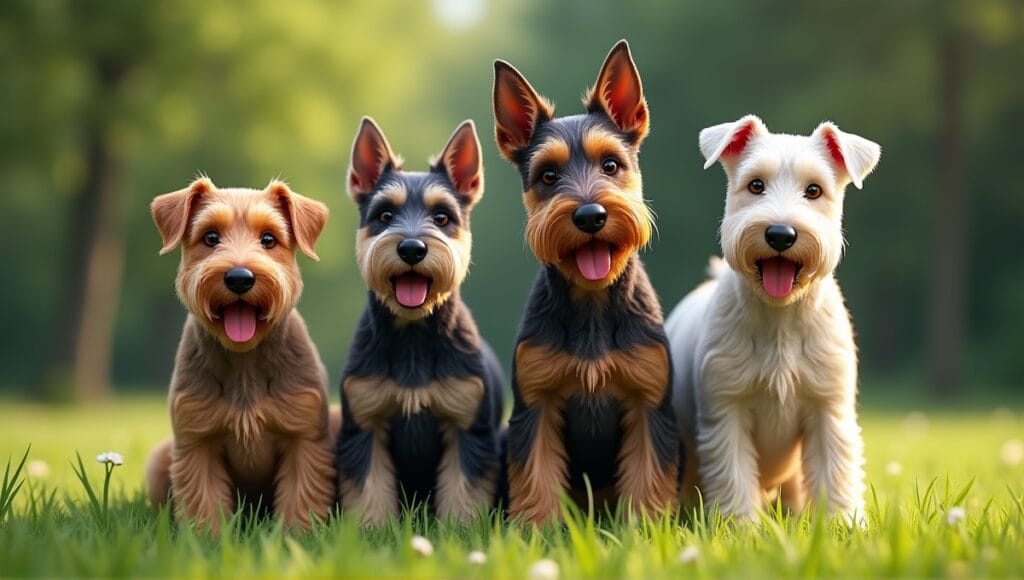
Large terrier breeds are a unique set of dogs that boast the spunky terrier attitude in a larger package. These dogs typically weigh between 30 and 70 pounds and measure 15 to 25 inches at the shoulder. They’re not tiny toy breeds, nor are they as massive as some of the working breeds. While they may not be the biggest dog in world, they certainly have a big personality.
Each of these dogs will have many of the same traits:
- Strong willed and independent
- Playful and active
- Smart and trainable
- Protective of their families
- Thick double coats that need regular grooming
I’ve worked with these breeds throughout my career, and let me tell you, they’re a handful – but in the best way possible. Originally, these breeds were bred to hunt vermin and small game, and it clearly shows in their spirited personalities. They’re always down for an adventure, and you’ll never be bored with them.
Popular Large Terrier Breeds
Here’s a comparison of a few popular large terrier breeds:
| Breed | Size | Coat Type | Temperament |
|---|---|---|---|
| Airedale Terrier | 50-70 lbs | Wiry | Confident Friendly |
| Irish Terrier | 25-27 lbs | Wiry | Bold Spirited |
| Kerry Blue Terrier | 30-40 lbs | Soft wavy | Alert Adaptable |
| Soft Coated Wheaten Terrier | 30-40 lbs | Soft silky | Gentle Steady |
| Welsh Terrier | 20-22 lbs | Wiry | Spirited Intelligent |
The Airedale is the biggest terrier, making them the self-proclaimed “King of Terriers.” Irish Terriers are known for their fiery red coat and personality. Kerry Blue Terriers are perhaps most well known for their unique blue-gray coat. Soft Coated Wheaten Terriers are named for their soft, wheat-colored coats and friendly, affable nature. Welsh Terriers are the smallest of these terrier breeds.
Each of these breeds has its own characteristics, but all of them possess that classic terrier spunk. I’ve personally trained all of these breeds, and I’m continually impressed by their intelligence and tenacity. While they’re not typically considered large dogs that dont shed, their coats do require regular grooming to manage shedding.
Temperament and Personality of Large Terriers
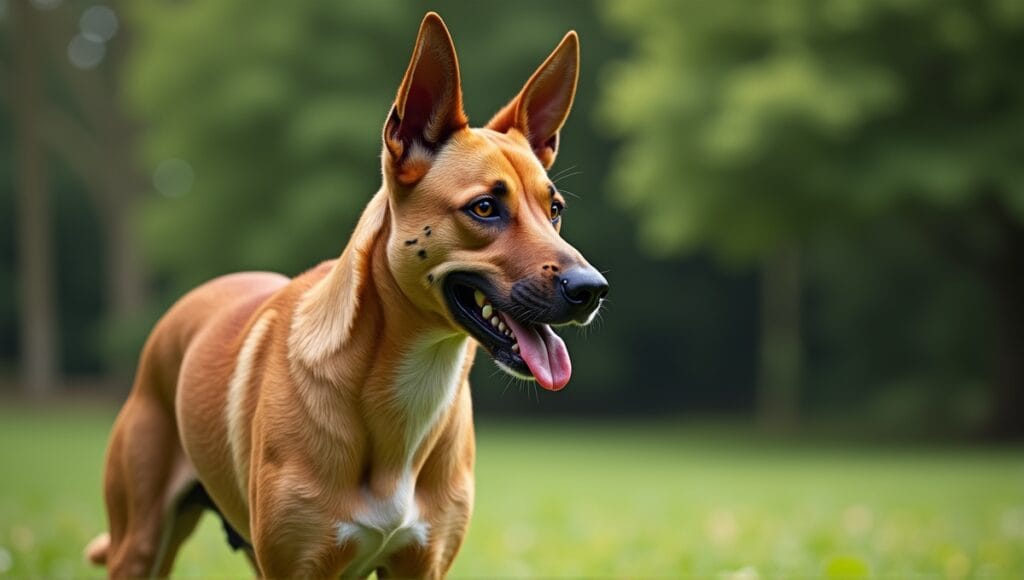
Large terriers are a handful. They are strong-willed, high-energy dogs. Terriers are independent and stubborn. They are always up for a game or an outdoor adventure.
Their intelligence makes them very easy to train, but it also means they can get into trouble if bored. Early socialization is key with terriers. Otherwise, they can be overly protective or aggressive toward other dogs and strangers.
They are generally good with children, and they are patient and playful playmates. However, they are a bit rambunctious, so you can’t leave them unsupervised around children. They can learn to live with other animals, but they do have a strong prey drive, so it’s not always possible to make this work.
I’ve seen them create strong bonds with their families. They are extremely loyal and will protect their family with great fervor. If you want a dog with a lot of character, a large terrier might be the right choice. Some people even consider them as low maintenance guard dogs, although their grooming needs might challenge that notion.
Exercise Requirements for Large Terriers
Large terriers require a lot of exercise to be happy and healthy. Here’s what you should shoot for:
- At least 60 minutes of activity each day
- A combination of walks, runs, and playtime
- Mental stimulation through games and training
- These dogs are great at activities like agility, fetch, and tug of war. They have a natural desire to chase and retrieve, so playing frisbee with them is a great way to burn their energy. Puzzle toys are also effective to keep them mentally stimulated.
As puppies, they require frequent, short play sessions to avoid overexertion. As adults, they can handle longer, more intense play sessions. As senior dogs, they still need regular exercise, but you’ll just adjust the intensity to their ability.
One of my favorite sayings is, “A tired terrier is a good terrier.” Exercise not only keeps them in good physical shape, but it also prevents any destructive behaviors that stem from boredom or excess energy.
Grooming Needs of Large Terrier Breeds
Most large terriers have a thick double coat, so you will need to groom them regularly. The top coat is usually wiry, and the undercoat is soft and insulating. The combination results in less shedding than some other breeds, but it requires more frequent grooming.
Most large terriers will need to be brushed at least 2 to 3 times per week to remove loose hair, prevent matting, and spread the natural oils throughout the coat. Some breeds, like the Soft Coated Wheaten Terrier, will mat if you don’t brush them daily.
You should only bathe your terrier every 6 to 8 weeks, or as needed. Over-bathing can make their coat texture and appearance look wired and can also dry out their skin. If you’re not comfortable grooming your terrier yourself, visit a professional groomer every 6-8 weeks.
I have personally groomed many terriers, and while it requires patience and consistency, it’s also a great time to bond with your dog. There’s also nothing more satisfying than seeing a well-groomed terrier walking proudly.
Health Considerations for Large Terriers
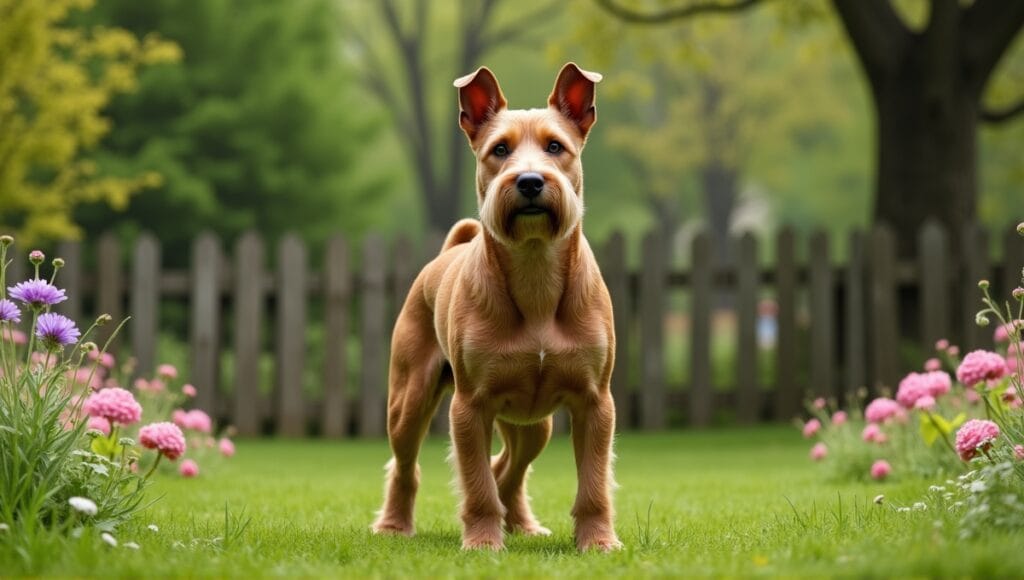
Large terrier breeds are generally healthy, but like all dogs, they are susceptible to a few health problems:
- Hip dysplasia
- Eye issues (such as cataracts or progressive retinal atrophy)
- Skin issues (like allergies)
- Hypothyroidism
- Some breeds may be predisposed to specific cancers.
Regular vet checkups will help you catch these problems early and prevent them from becoming more serious issues. You should also keep up with their vaccinations, prevent fleas and ticks, and take care of their teeth. Feeding them a quality, properly portioned diet for their size and activity level will also help keep them healthy.
I’ve also personally experienced how taking care of a dog can help it live a longer, higher-quality life. With proper healthcare, these large terriers can be your best friends for 12-15 years or even longer.
Training Large Terrier Breeds
Training a large terrier requires consistency, patience, and a good sense of humor. Terriers are intelligent, though they can be a bit stubborn. Positive reinforcement with lots of praise and rewards for good behavior is the most effective way to train them.
Start training them young to instill good behaviors. Socialize them extensively from a young age with different people, animals, and situations. This helps prevent any fear or aggression issues.
When you notice stubbornness, address it firmly (while still being gentle). Never resort to harsh punishments, as this will only damage your relationship with the dog. Instead, redirect any unwanted behaviors to something more appropriate.
Many of these dogs do well with advanced training, such as agility or obedience competitions. These are excellent outlets for mental and physical stimulation while further bonding with your dog. I’ve certainly trained them for these events, and you’ll be amazed by the enthusiasm and skill they bring to the table.
Large Terriers as Family Pets
Large terriers are excellent family dogs if you’re the right family. They’re loyal, affectionate, and have a lot of character. However, they’re not the best choice for novice dog owners as they can be strong-willed.
These dogs will do fine in an apartment with sufficient daily exercise and mental stimulation. However, they really thrive in a house with a fenced yard where they can run and play. They’re an excellent dog for active families because they have a lot of energy.
With proper socialization, large terriers are good with children and other animals. Yet, they’re so rambunctious that you can never trust them alone with children, especially young kids. Additionally, their strong prey drive makes them a poor choice for a home with small animals such as rabbits or guinea pigs.
In my opinion, large terriers are very loyal to their families. They’re always ready to play, whether it’s hiking in the mountains or playing games in the backyard. If you can handle their energy and personality, a large terrier will undoubtedly bring happiness, laughter, and a little bit of excitement to your life. While they’re not typically considered large poodle breeds, they share many characteristics with larger poodles, including intelligence and energy levels.
Final Takeaways
Large terriers are an interesting group of dogs because they still have that spunky terrier attitude, just in a larger body. From Airedales to Welsh Terriers, these dogs are intelligent, energetic, and loyal. They require plenty of exercise and mental stimulation to keep them happy, and their coats need regular grooming. In terms of health, look out for any breed-specific problems and schedule regular vet visits. Training can be a bit difficult, but it’s worth it. They’re great family dogs if you can handle their energy and attitude. Just remember, large terriers aren’t just dogs; they’re lifelong companions who will certainly keep you on your toes.



